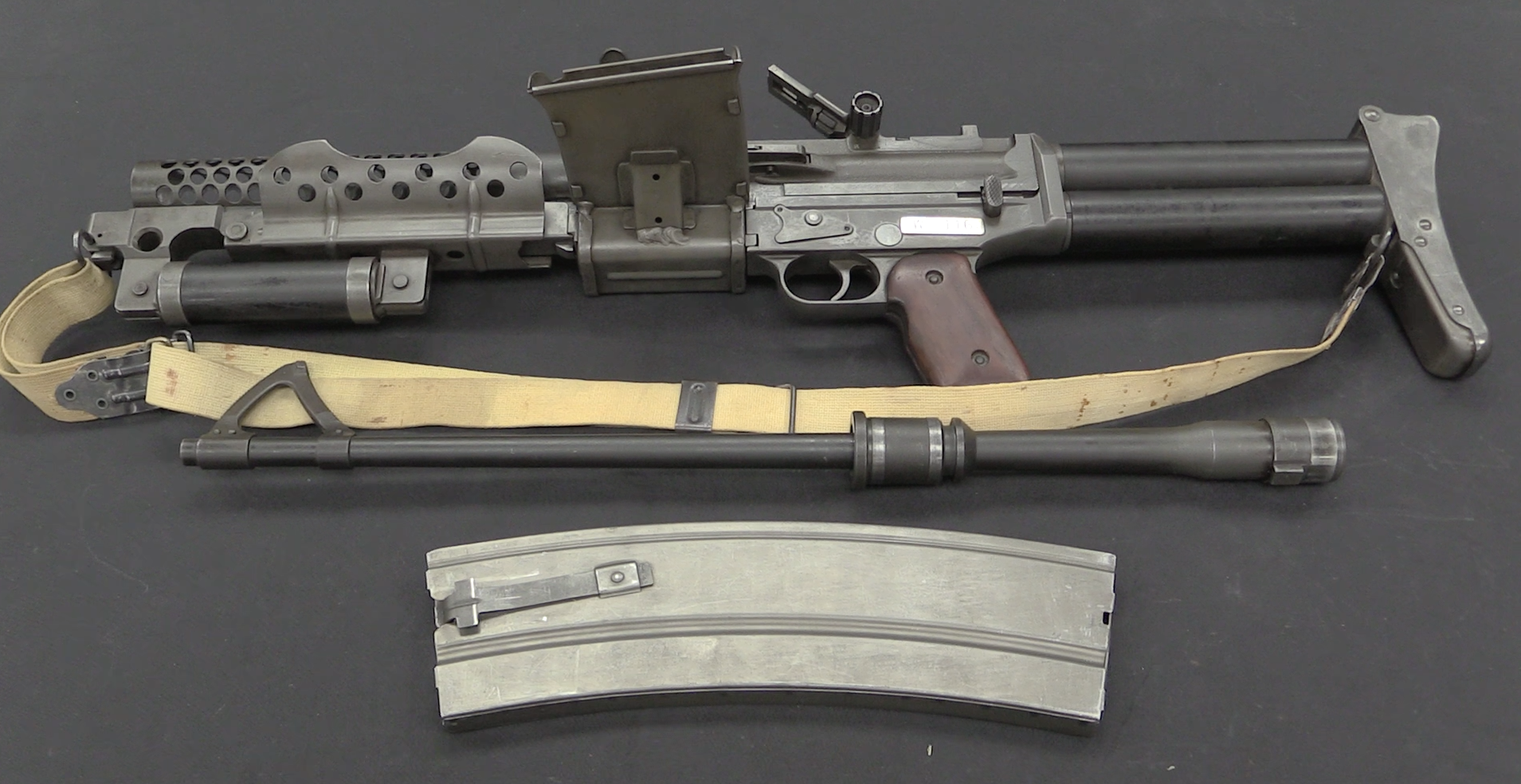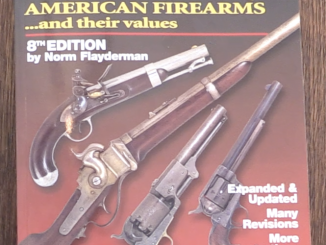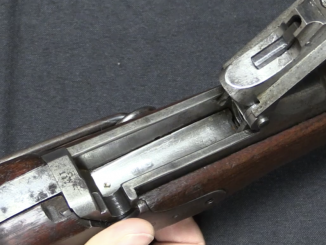This rifle is lot #1237 in the upcoming May 2019 Rock Island auction.
Patented in 1852 by Henry North and Chaucey Skinner, about 700 of these revolving rifles were made by 1856. The design used a locking wedge to seal the cylinder forward so that the firing chamber would nest into the barrel and seal the cylinder gap. The operating lever that did this also served to index the cylinder and recock the hammer, making for a fairly sophisticated design. The rifles were manufactured by North & Savage of Middletown Connecticut; the Edward North who was partner in the company was brother of Henry North, who was co-designer. The company dates back to the North & Cheney partnership formed to produce military pistols for the US government in 1799.
The improved patent of 1856 would replace the locking wedge system with a toggle link, and would be the basis for the North & Savage “Figure 8” revolvers. The revolving rifle design was abandoned in favor of handguns, as they presumably were significantly more popular on the market.




By the way: according to my notes, the following muzzleloaders use some kind of gas-seal revolver principle:
Puckle gun
Collier
Baker
Beattie J.
Lang J. [Joseph Lang]
Moore & Harris
Nichols & Childs
Parker Field & Sons
Philip Webley
Savage & North Figure 8
Savage 1861 Navy
Whitney Hooded Cylinder Revolver
Whitton Daw
Is there any more?
Probably many more, most without patent marks or maker’s names.
During the 1840s and 1850s, there were many makes of “transitional” revolvers made in Europe, which were basically pepperboxes in which the rotating barrel cluster was replaced by a short cylinder and a fixed single barrel, usually secured by a cross-screw to the end of the abbreviated axis rod.
The screw went either side to side or straight up from underneath, rather than its former orientation straight down the rod’s axis, to prevent the barrel from rotating on the rod. It was a cheap way for makers of the “old-fashioned” pepperbox to cash in on the “new technology” in revolvers, requiring no modification of the actual action of the pepperbox design.
More than a few such “transitional” revolvers had basic types of gas seal systems, most often similar to the one John Browning Sr. used on his revolving rifles. A coil or leaf spring pressed the cylinder forward against the breech end of the barrel, and the two were counterbored so that (usually) the barrel’s beveled outer radius fit inside the beveled inner radius of each chamber in a male-female joint.
This was in fact a “reversed” version of the way breechloading light cannon had been loaded, with a “chamber piece” rather like an oversized beer stein, in the 15th Century.
Most of these weapons were single-action, and drawing the hammer back also worked a linkage which pulled the cylinder back against the spring just enough to slip past the barrel breech.
The more sophisticated ones had a separate sear-type link that released the cylinder when the hammer was at full cock, so the spring could shove it back forward to mate up with the barrel. The cheaper ones just held it back until the trigger was pulled and the hammer seared off, and the hammer and cylinder snapped forward in unison.
Pretty much any of these “gas-seal” revolvers examined today show erosion of the barrel breech taper if they were fired much. And most have no maker’s marks as they were made by small shops in France and Belgium, and their makers didn’t want to deal with patent suits by Lang in England or anyone else elsewhere.
Of course, like most of the “Suicide Special” revolvers of a later generation, the majority of these pistols were bought for the eponymous “things that go bump in the night”, and spent their lives loaded but never fired in somebody’s dresser drawer.
cheers
eon
Thank you for your detailed answer. 🙂
“More than a few such ‘transitional’ revolvers had basic types of gas seal systems, most often similar to the one John Browning Sr. used on his revolving rifles. A coil or leaf spring pressed the cylinder forward against the breech end of the barrel, and the two were counterbored so that (usually) the barrel’s beveled outer radius fit inside the beveled inner radius of each chamber in a male-female joint.
[…]
Most of these weapons were single-action, and drawing the hammer back also worked a linkage which pulled the cylinder back against the spring just enough to slip past the barrel breech.
The more sophisticated ones had a separate sear-type link that released the cylinder when the hammer was at full cock, so the spring could shove it back forward to mate up with the barrel. The cheaper ones just held it back until the trigger was pulled and the hammer seared off, and the hammer and cylinder snapped forward in unison.”
I think, in this case the main function of the gas-seal feature is the proper indexing of the barrel’s bore and the cylinder’s chambers (witout conventional cylinder stop mechanism).
Very likely. In the original pepperboxes, rotation was by a hand very like a Colt revolver, acting on a ratchet-type rotator around the base rod. The hammers usually had a hollow, truncated cone-shaped striker at the end, the purpose being that if the nipple and cap were a bit off-center, the frustum would still hit it hard enough on top or on a “corner” to fire it.
As such, if the barrel firing was a little off-center, it didn’t really matter.
In the case of the transitional revolvers, an improperly indexed cylinder would probably knock the barrel right off the base rod on firing. So the “male-female” joint of the barrel/cylinder gap took the place of the cylinder-index notches and lever on a Colt or etc., in ensuring that the two were lined up properly.
cheers
eon